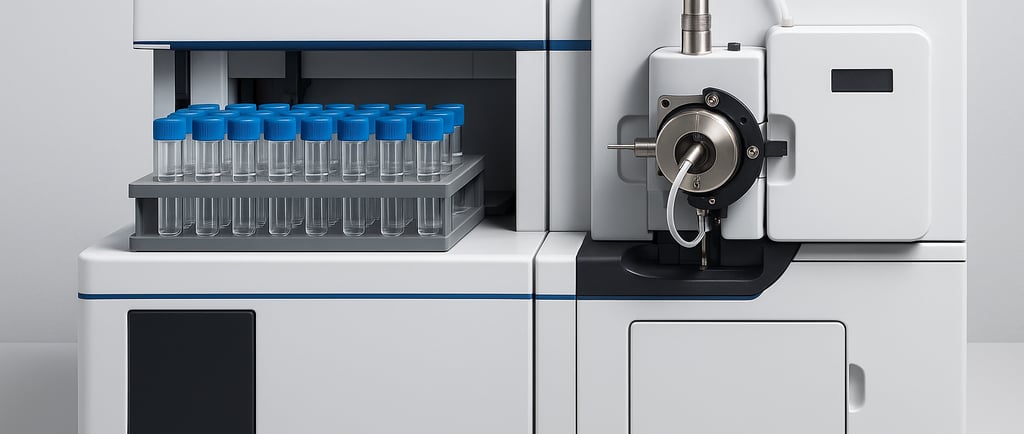Best Test for Measuring Cortisol: Salivary CAR vs. Blood (What the Science Says)
Team Alpha
10/9/20255 min read


Cortisol is central to how your body handles stress and keeps energy levels regulated. If you’re optimizing performance and longevity, measuring cortisol the right way matters — it changes how you interpret stress, recovery, and intervention effects. Two common approaches dominate the clinical and research space:
Salivary cortisol, especially the Cortisol Awakening Response (CAR) and diurnal saliva curves, and
Serum/plasma cortisol measured from blood draws at single or repeated intervals (including stimulated tests).
Both have strong scientific uses — but they answer slightly different questions. Below I compare them on scientific metrics, practical pros/cons, when to use which, and how to get clinically meaningful data (sampling protocols, assays, interpretation). I cite key peer-reviewed work so you can follow up.
Quick summary (TL;DR)
Salivary cortisol (CAR / diurnal curve) is the best noninvasive method to track free-cortisol dynamics across the day and capture the morning surge that links to stress-related outcomes. It reflects biologically active cortisol and is ideal for field studies and repeated home sampling. e-EnM+1
Serum/plasma cortisol measures total circulating cortisol (bound + free) and remains the clinical standard for diagnostic tests (e.g., adrenal insufficiency, Cushing’s) and for dynamic stimulation or suppression testing. It’s more controlled but invasive and less convenient for repeated diurnal profiling. SAGE Journals+1
Practical rule: Use salivary CAR/diurnal curves for lifestyle/behavioural research, screening diurnal dysregulation, or monitoring interventions. Use blood cortisol (including stimulation tests) when you need diagnostic accuracy, single timepoint clinical decision-making, or assay methods that require serum. PMC+1
What researchers actually measure (key metrics)
Cortisol Awakening Response (CAR)
Metric: rise in cortisol from waking to ~30 minutes after waking (sometimes 15 and 45 min included). Reported as absolute change or area under the curve (AUCg). CAR links to psychosocial stress, chronic workload and health outcomes. ScienceDirect+1
Diurnal slope / curve
Metric: multiple samples across the day (e.g., waking, +30 min, pre-lunch, late afternoon, bedtime) plotted and quantified by slope or AUC. Flatter slopes (less decline through day) associate with fatigue and worse health outcomes. PMC+1
Single morning serum cortisol
Metric: a single blood draw (often 8 AM) measuring total cortisol. Clinically useful, but sensitive to transient factors and less informative about diurnal rhythm. SAGE Journals
Dynamic stimulation/suppression tests (serum)
Metric: ACTH stimulation test, dexamethasone suppression test, insulin tolerance test — used to probe adrenal reserve and pathology. These are diagnostic standards that saliva cannot replace. BioMed Central
Free cortisol vs total cortisol vs cortisone
Saliva ≈ free cortisol (unbound fraction) — the biologically active portion. Recent work suggests salivary cortisone may correlate even better with serum free cortisol in some contexts. Assay choice matters. e-EnM+1
How well do saliva and blood agree?
Correlation: Salivary cortisol tends to correlate with free (unbound) cortisol in plasma and is often proportional to serum cortisol under many physiological conditions. Several studies show good correlations, especially when samples are paired and timing is precise. ScienceDirect+1
Nuances: The agreement can weaken in stimulated states, during very low or very high cortisol concentrations, or when sampling/timing protocols are inconsistent. Newer evidence indicates salivary cortisone may outperform salivary cortisol as a proxy for serum free cortisol in some diagnostic settings. ScienceDirect+1
Strengths & limitations — practical comparison
Salivary cortisol (CAR / diurnal profile)
Strengths
Noninvasive, repeatable at home — excellent for tracking diurnal rhythms, CAR, and effects of lifestyle changes. PMC+1
Reflects free cortisol, the biologically active hormone relevant to brain and tissue effects. e-EnM
Well suited for population/field studies and serial monitoring without clinic visits. PMC
Limitations
Timing sensitivity & compliance: CAR and slope measures are highly sensitive to waking time, sample timing (±5–10 min matters), food, toothbrushing, and smoking. Poor compliance or imprecise timing can introduce large noise. ScienceDirect+1
Analytical variability: Immunoassays vs LC-MS/MS give different accuracy; sample storage/transport matters. Salivary cortisone may sometimes be a better proxy. e-EnM+1
Interpretation complexity: CAR is influenced by many psychosocial factors (sleep, anticipation of day, chronic stress), so it’s not a single diagnostic answer. Meta-analyses show variable reliability in free-living settings. PMC+1
Serum/plasma cortisol (single or interval draws)
Strengths
Clinical gold standard for diagnostics and for stimulation/suppression tests (ACTH, dexamethasone). High analytical control in lab settings. BioMed Central+1
Less dependent on subject self-sampling behavior — more controlled timing in clinic. Useful when absolute cortisol concentration (total cortisol) is needed for medical decisions. SAGE Journals
Limitations
Invasive (venipuncture), inconvenient for repeated diurnal profiling.
Measures total cortisol (bound + free). Total cortisol depends on binding proteins (e.g., CBG) that vary with illness, medications, pregnancy — so blood levels don’t always reflect biologically active hormone. Calculated free cortisol or specialized assays (LC-MS/MS) can help but add complexity/cost. e-EnM+1
Assay methods matter: immunoassay vs LC-MS/MS
Immunoassays are common, fast and cheaper but can cross-react with other steroids (especially at low concentrations).
LC-MS/MS (liquid chromatography–mass spectrometry) is more specific and increasingly recommended in research/clinical labs where accuracy is essential (e.g., low cortisol states, steroid therapy follow-up). If you care about precision (executives optimizing interventions), prefer LC-MS/MS reports when available. e-EnM+1
How to sample correctly (practical protocols for trusted data)
For CAR (saliva)
Days: Collect on 2–3 weekdays to improve reliability; avoid atypical days. ResearchGate
Times: Immediately upon awakening (0 min), ~+30 min, optional +45 and +60 min. Exact time stamps (phone alarm + photographed tube) help. ScienceDirect
Pre-collection rules: Don’t eat, drink (except water), brush teeth, or smoke before samples; rinse mouth with water and wait 10 minutes. Record wake time and any deviations. ScienceDirect
Storage: Freeze or refrigerate per kit instructions; ship quickly to lab or use validated mailer. PMC
For diurnal saliva curves
Points: Waking, pre-lunch, late afternoon, bedtime (or more frequent sampling for detailed slope). Consistency across days is key. PMC
For serum cortisol
Single morning draw: Standardized (e.g., 8:00 AM) after overnight rest if you need a baseline.
Stimulated tests: Follow clinical protocols (ACTH stimulation, dexamethasone suppression) in clinic — these are diagnostic and must be supervised. BioMed Central
Which to choose for your goals?
You want to measure daily stress biology, track interventions (sleep, mindfulness, shift work), or capture morning surge? → Salivary CAR / diurnal saliva is the right tool if you can ensure precise sampling and use validated assays. ScienceDirect+1
You need a diagnostic answer (adrenal insufficiency, Cushing’s), drug monitoring, or stimulated test results? → Serum/plasma cortisol (with dynamic tests) is mandatory. BioMed Central
You want maximal accuracy for field research: Consider saliva with LC-MS/MS or measure salivary cortisone as an alternative proxy (emerging evidence). ScienceDirect+1
Common pitfalls and how to avoid them
Poor timing/compliance for CAR: Use alarms, timestamped photos, and multiple days of sampling. If compliance can’t be guaranteed, saliva CAR results will be noisy. ResearchGate
Relying on a single morning serum cortisol to rule out dysregulation: One value can be misleading — interpret in clinical context and use dynamic tests where indicated. BioMed Central
Ignoring assay differences: Ask your lab whether results are immunoassay or LC-MS/MS and whether they report cortisone. That affects interpretation. e-EnM+1
Practical takeaways (for busy professionals)
For lifestyle optimization and monitoring: use salivary CAR + diurnal samples, collected precisely across multiple days, analyzed with a reliable lab (ideally LC-MS/MS). This tells you how stress and recovery patterns are changing with sleep, travel, or interventions. PMC+1
For clinical diagnostics or when an accurate absolute cortisol concentration is needed: use blood cortisol and, when indicated, formal stimulation/suppression tests under clinician supervision. BioMed Central
If you want the best of both worlds: combine approaches — saliva for day-to-day rhythm + targeted blood testing for clinical confirmation. accjournal.org
Insights
Expert guidance for health-conscious professionals.
Support
Connect
info@genthealthhub.com
© 2025. All rights reserved.
